Are you looking for the perfect garden, with bright and vibrant flowers? Then the marigold is the must-have plant for your outdoor space. Not only does it add a lot of beautiful color to any garden, but it’s also easy to take care of and requires minimal maintenance. The key to making marigolds really shine in your garden is to select some of its best companion plants to bring out earthy tones, long-lasting blooms, and other stunning features. This blog post will provide you with all the essential tips to know about marigolds and their best companion plants.
What is a Companion Planting?
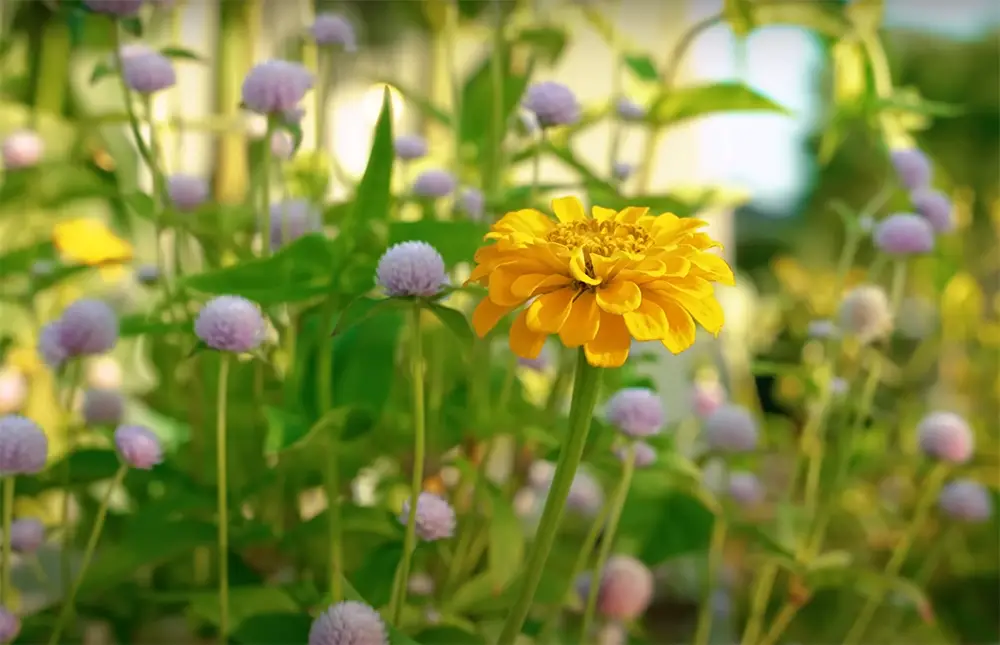
Companion planting is not only beneficial for plants but can also provide a more aesthetically pleasing garden. By combining different colors, shapes and sizes of plants, you can create an attractive and unique landscape. Not only does this enhance the beauty of your garden, but it also provides habitat and food sources for wildlife.
dditionally, companion planting is a great way to maximize the limited space you may have in your garden. By growing plants that are compatible with each other, you can avoid overcrowding or competition between plants for resources like sunlight, water and nutrients. Planting different varieties of vegetables and fruit together can also increase yields by providing pollinators with a variety of options for food. This also helps prevent pests from becoming too comfortable in one area and spreading diseases throughout the garden.
By using companion planting, you can create a sustainable and productive garden that is both aesthetically pleasing and beneficial to the environment. Furthermore, it requires little effort on your part and can be incorporated into any type of garden design. With careful planning and selection of compatible plants, you can create a beautiful and productive garden that will thrive for years to come [1].
How to Implement Companion Planting in Your Garden
When utilizing companion planting, it is important to think about the needs of each plant and how they can work together. Each plant has its own requirements for light, water, nutrients, and space. It is important to consider these needs when selecting which plants to put together in your garden.
Once you have determined the compatible plants for your garden, you should plan out their locations. The layout of the plants can be determined by looking at factors such as sun exposure, water drainage and soil fertility. Additionally, it is important to leave enough space between plants so that they can grow and receive the necessary resources.

Overall, companion planting is a great way to create a dynamic and productive garden. With careful consideration of each plant’s needs and regular monitoring, you can create a unique and beautiful landscape that will provide mutual benefits for years to come.
Marigold & Insects: Marigolds as a Natural Pesticide
Marigolds have a strong scent that repels many insects. The scent is especially effective against gnats, mosquitoes, and aphids. Planting marigolds around vegetable gardens or in flower beds can help to keep these pests away from the plants. Marigolds can also be infused into oils and used as an all-natural pesticide for outdoor spaces.
The oil can be applied to plants and leaves, or sprayed around the perimeter of the garden, creating a barrier against invading insects. Marigold oil is often used as a natural alternative to chemical pesticides and is very effective in keeping away many common pests.
Beyond their uses as an insect repellent, marigolds are also known for their bright colors and fragrant scent. They can be planted to create a beautiful garden landscape, as well as provide natural protection against pests. Marigolds are easy to care for and require minimal maintenance. As a bonus, they attract beneficial insects such as butterflies, bees, and ladybugs that help pollinate the flowers in the garden.
The uses of marigolds extend beyond the garden; they can also be used to make natural dyes for fabrics. The petals of marigolds can be steeped in hot water and strained to create a vivid yellow dye that is both safe and effective. Marigold dye has been used for centuries to add vibrant colors to clothing, linens, and other textiles.
Marigold is a versatile flower that can be used for many purposes, from natural pest control to creating beautiful garden landscapes and vibrant dyes for fabrics. Whether planted in the ground or infused into oil, marigolds are an excellent way to keep pests away while adding beauty and color to your outdoor spaces [2].
Benefits of Marigold Plant Companions
Melons
Melons, such as watermelon and cantaloupe, are a great choice for a marigold plant companion. These plants share several common characteristics that make them perfect partners. First, both melons and marigolds enjoy full sun exposure to reach their ideal growth potential. They also need the same level of irrigation and nutrient requirements, so planting them together helps ensure both plants will stay healthy. Marigolds also act as a deterrent to common melon pests, helping protect the fruits from being devoured before they can be harvested.
Tomatoes
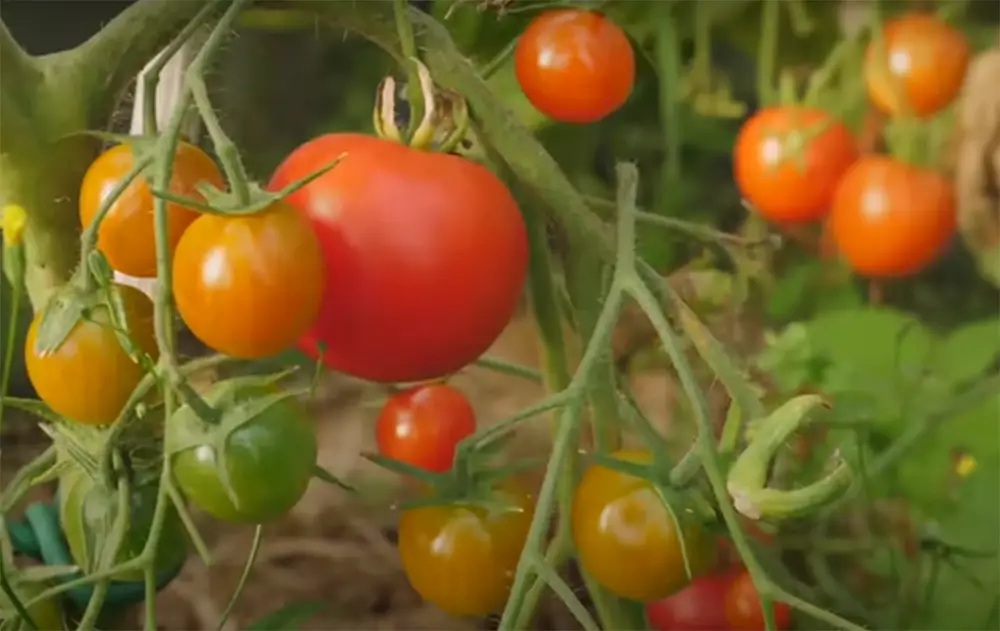
Tomatoes and marigolds have many of the same beneficial qualities for plant companions. Tomatoes thrive in well-drained soil enriched with compost or manure, and marigolds can help aerate the soil, making it more suitable for growing tomatoes. Additionally, the bright flowers of marigolds can act as a natural pest repellent, helping keep away some of the most common tomato pests. By planting them together, you guarantee that both will benefit from ample sunlight and nutrients, allowing them to thrive and flourish to their maximum capacity.
Squash and Zucchini
Marigolds and squash or zucchini are great plant companions to have in a garden. Both of these plants need full sun exposure and adequate water and nutrition to reach their ideal growth potential, making them the perfect complement for each other. Additionally, marigolds provide a natural way to ward off pests that often target both squash and zucchini.
Eggplants
Eggplants and marigolds make great plant companions, as they both need similar growing conditions. Both thrive in warm weather with plenty of sun exposure and well-drained soil enriched with compost or manure. Marigolds also help ward off common pests that target eggplants, such as aphids and flea beetles. Finally, planting them together ensures that both plants receive the necessary sunlight and nutrients for optimal growth. This symbiotic arrangement allows them to reach their full potential and thrive.
Potatoes
Lettuce
Lettuce and marigolds make great plant companions for a garden. Both plants need plenty of sun exposure, well-draining soil, and adequate water to reach their ideal growth potential, so planting them together helps ensure both will get the proper nutrients they need. Marigolds also act as a natural pest repellent, helping protect lettuce from the most common pests. Finally, marigolds provide a beautiful contrast to the green leaves of lettuce, making your garden even more vibrant and attractive.
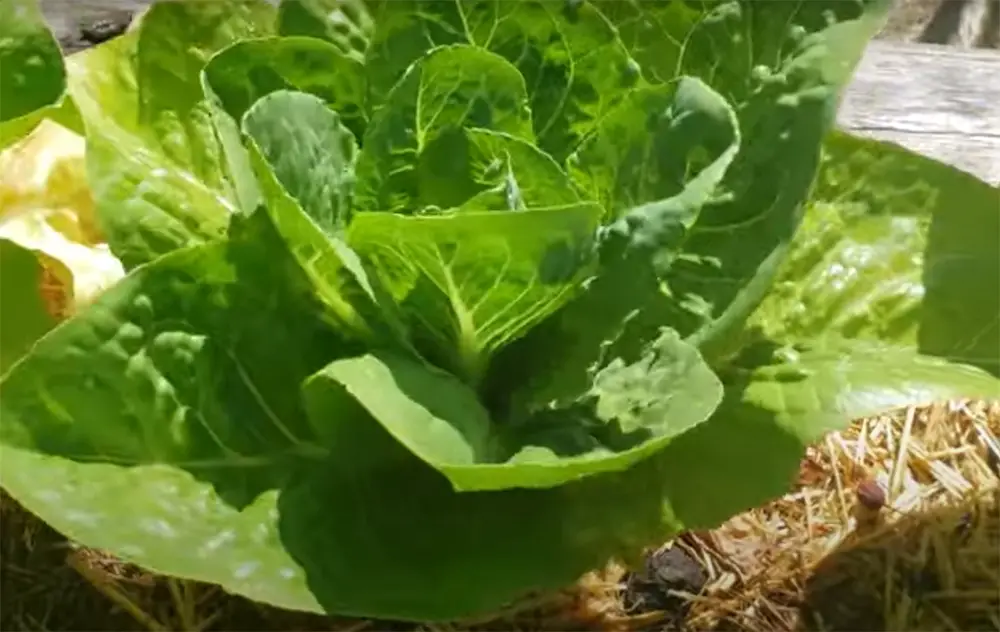
Pumpkins
Pumpkins and marigolds make excellent plant companions due to their compatibility in terms of growing conditions. These vibrant and versatile plants thrive under similar requirements, including ample sunlight and well-drained soil enriched with organic materials. By creating an optimal environment, both pumpkins and marigolds can reach their full growth potential, displaying their beauty and abundance.
Moreover, marigolds serve a dual purpose by acting as natural protectors against common pumpkin pests such as squash bugs and cucumber beetles. Their aromatic properties and vibrant colors attract beneficial insects while repelling harmful pests, creating a harmonious and pest-resistant garden. This symbiotic relationship further enhances the overall health and productivity of these companion plants, ensuring a bountiful and visually appealing garden space.
Asparagus
In a garden, the pairing of asparagus and marigolds is a splendid choice. To achieve its utmost growth potential, asparagus thrives in full sun exposure, well-draining soil, and ample water. Additionally, marigolds serve as a natural deterrent against common pests that often afflict asparagus, including aphids and Japanese beetles. This harmonious combination not only enhances the aesthetics of the garden but also promotes the healthy development of the plants.
Beans
Combining beans and marigolds in your garden is a wonderful choice. These plants thrive in sunny locations with well-drained soil and proper watering, allowing them to reach their fullest potential. Not only do marigolds add a vibrant touch to your garden, but their bright colors also act as a natural deterrent against pests like aphids and Mexican bean beetles, safeguarding your beans. By planting them together, you ensure that both plants receive the necessary nutrients and water to flourish. This harmonious partnership will elevate the beauty and productivity of your garden.
Onions
Onions and marigolds are an excellent combination for a thriving garden. These two plants complement each other perfectly, sharing similar requirements for optimal growth. They both thrive in full sun exposure, benefiting from well-draining soil that allows their roots to breathe and access essential nutrients. Additionally, adequate watering is crucial to ensure the plants reach their ideal growth potential.

One remarkable benefit of planting marigolds alongside onions is their natural pest-deterrent properties. Marigolds emit a fragrance that repels common pests that often target onions, such as onion maggots and thrips. By incorporating marigolds into your garden, you can create a protective barrier that helps safeguard your onion plants and promote their overall health [3].
What Flowers to Plant with Marigolds
Dusty Miller
Dusty miller (Senecio cineraria) is a Mediterranean plant with silvery green, fern-like leaves that provide excellent contrast to the bright golden blooms of marigolds. This drought-tolerant annual will thrive in hot, sunny locations and adds a delicate texture to garden beds. For best results, grow dusty miller from seed or cuttings in the spring and water regularly until it is well established.
Zinnias
Zinnias (Zinnia elegans) are annuals that come in a wide range of colors, from red to pink to yellow. They have daisy-like flowers and will bloom from late spring through early fall. Zinnias are easy-to-care for plants that require full sun and well-drained soil. For best results, start them in the garden from seed or cuttings and water regularly to keep the soil moist but not soggy.
Angelonia
Angelonia (Angelonia angustifolia) is another colorful annual that will pair nicely with marigolds. It has tall spikes of purple, blue, pink or white blooms and is perfect for adding height to a flower bed. Angelonia prefers full sun and well-drained soil and should be planted in the spring from seed or cuttings. Water it regularly but make sure that the soil is not overly wet.
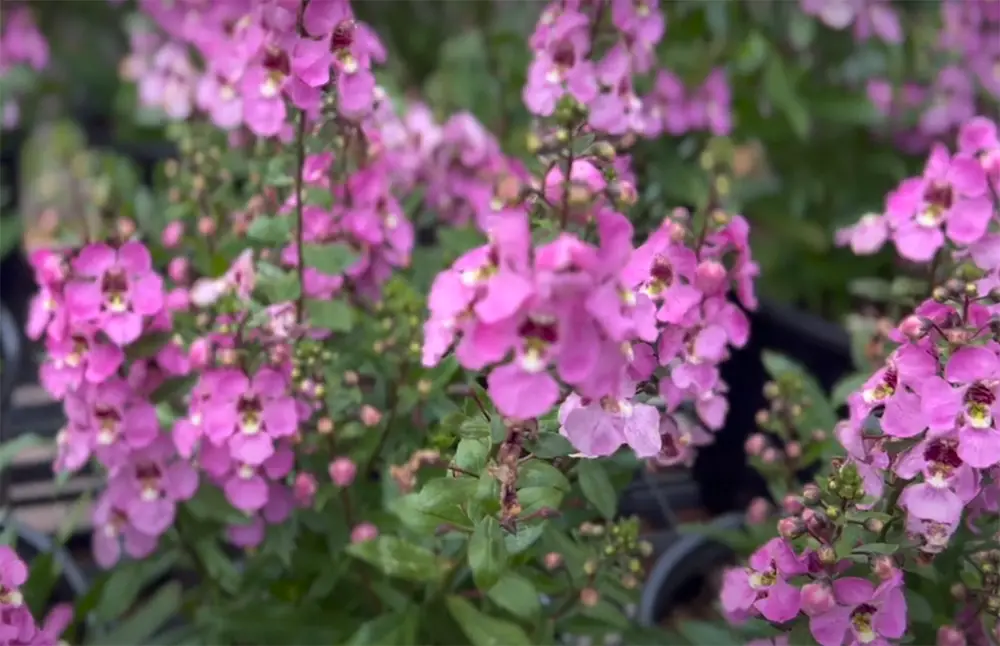
Gerbera daisies
Gerbera daisies (Gerbera jamesonii) are colorful annuals that come in shades of pink, yellow, red and orange. They have large, daisy-like flowers that will add a cheerful pop of color to any garden. Gerberas require full sun and well-drained soil and should be planted in the spring from seed or cuttings. Water regularly to keep the soil moist but not soggy.
Asters
Asters (Aster spp.) are herbaceous perennials that have daisy-like flowers in shades of pink, purple, white and blue. They will bloom all summer long and provide a lovely backdrop to the golden blooms of marigolds. Asters prefer full sun and well-drained soil and should be planted in the spring from seed or cuttings. Water regularly to keep the soil moist but not soggy.
Lantana
Lantanas (Lantana camara) are hardy perennials that come in a variety of colors, from pink to yellow to orange. They have an upright growth habit and will bloom all summer long. Lantanas require full sun and well-drained soil and should be planted in the spring from seed or cuttings. Water regularly to keep the soil moist but not soggy. Deadhead the flowers regularly to encourage more blooms. With proper care, these plants will provide colorful blooms for many years to come.
Lavender
Lavender, scientifically known as Lavandula spp., is a delightful aromatic herb that brings a gentle touch of purple to any garden. With its fragrant blossoms and soft gray-green foliage, it beautifully complements the vibrant golden blooms of marigolds. As a drought-tolerant perennial, it thrives under full sun and well-drained soil, making it ideal for planting in the spring using either seeds or cuttings. To maintain its vitality, water regularly, ensuring the soil remains moist without becoming waterlogged.
Clematis
Clematis (Clematis spp.) is a vigorous climbing vine that showcases large, bell-shaped flowers in delightful hues of pink, blue, purple, and white. Its airy growth habit brings texture to gardens and creates a stunning backdrop for marigolds. For optimal growth, Clematis thrives in full sun and well-drained soil, making it ideal for spring planting using either seeds or cuttings. Regular watering is essential to maintain moist, but not soggy, soil. With proper care, these vines will continuously bless your garden with their exquisite blooms for many years to come.
Roses
Roses (Rosa spp.) are classic shrubs that come in a wide range of colors and sizes, making them a versatile choice for any garden. With their fragrant blooms and lush foliage, they add a touch of elegance and beauty to any landscape. These drought-tolerant perennials thrive in full sun, where their vibrant blooms can shine, and they prefer well-drained soil to ensure optimal growth. Planting roses in the spring from seed or cuttings allow them to establish strong roots and ensure their longevity. To maintain the health and vitality of these plants, it is important to water them regularly, keeping the soil moist but not soggy. By providing the proper care and attention, you can enjoy the stunning beauty of rose blooms for many years to come, creating a captivating focal point in your garden.
Geraniums
Geraniums (Pelargonium spp.) are classic garden flowers with bright, showy blooms in shades of pink, red and white. They have a mounding growth habit that will provide contrast with the tall spikes of marigolds. Geraniums prefer full sun and well-drained soil and should be planted in the spring from seed or cuttings. Water regularly to keep the soil moist but not soggy. Deadhead the flowers regularly to encourage more blooms and enjoy beautiful colors all season long.
FAQ
What plants go well with marigolds?
Marigolds tend to look lovely in combination with just about any type of plant, from small herb varieties and ground-cover plants to tall ornamental grasses. Some particularly good companions for marigolds include dusty miller, dianthus, salvia, verbena, petunias and baby’s breath. Most vegetables also go well with marigolds as both can provide some natural pest control. Planting marigolds in and around vegetable gardens will help deter pests such as aphids, beetles, nematodes, squash bugs and tomato hornworms. Additionally, planting certain flowers like marigolds next to tomatoes can result in larger yields of fruit.
Can marigolds be planted with vegetables?
Yes! As mentioned above, marigolds can actually benefit vegetables when planted near them. Marigolds act as a natural pest deterrent and help to keep bugs away from vulnerable plants like tomatoes or squash. Additionally, the bright colors of the marigolds can help draw beneficial insects like bees and butterflies toward your garden, which in turn will pollinate other flowers and vegetables. Marigolds also have a mild scent which some pests find unpleasant, making them an even more effective companion to vegetable plants.
Are marigolds easy to take care of?
Yes! Marigolds are extremely easy to grow and maintain. They require very little maintenance such as occasional deadheading (removal of dead flowers) and basic watering needs. Marigolds can tolerate a wide range of soils and climates, making them an ideal choice for beginner gardeners or those with limited gardening space. They are also low-maintenance plants that don’t require much pruning or fertilizer. The only thing to look out for is the potential for disease if they become over-watered or planted in soggy soil.
How many marigolds can you plant together?
Useful Video: Planting Marigolds As Companion Plants
Conclusion Paragraph
So, there are companion plants that can be planted with marigolds to help them thrive and produce more flowers. They can provide added nutrients, attract pollinators, improve soil quality, and even act as a natural pest repellent for marigolds. Ultimately, companion planting marigolds with other plants can be beneficial for all the species involved! Additionally, by being mindful of light conditions and spacing when arranging your garden beds you can ensure that your marigolds are getting the right amount of sun and air circulation they need to thrive. With a bit of research and careful planning, you can create an amazing garden bed full of marigolds and companion plants for years to come.
References:
- https://www.almanac.com/companion-planting-guide-vegetables
- https://www.homesandgardens.com/gardens/do-marigolds-keep-bugs-away
- https://www.gardeningknowhow.com/ornamental/flowers/marigold/marigold-companion-plants.htm





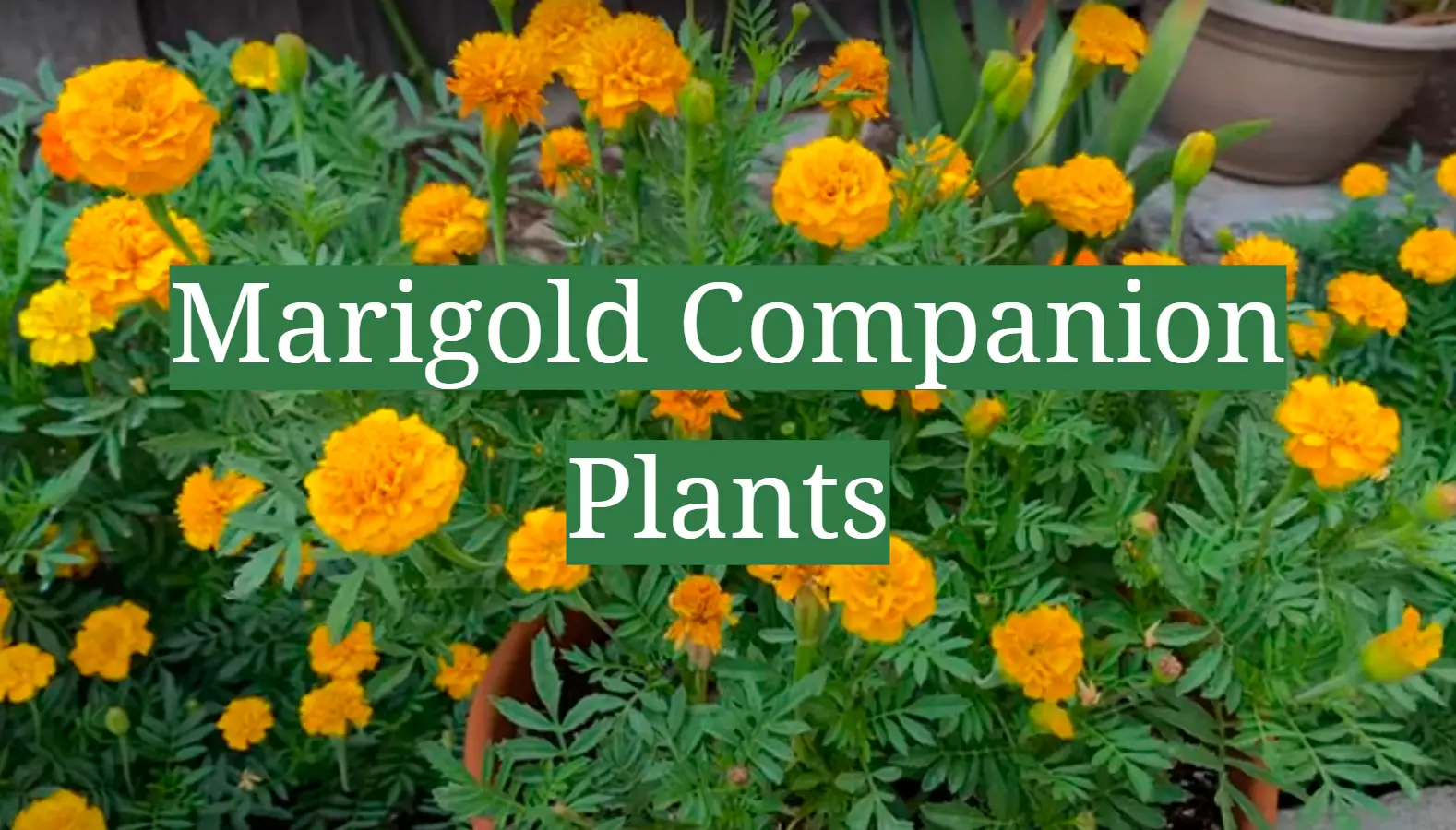




Leave a Reply
View Comments